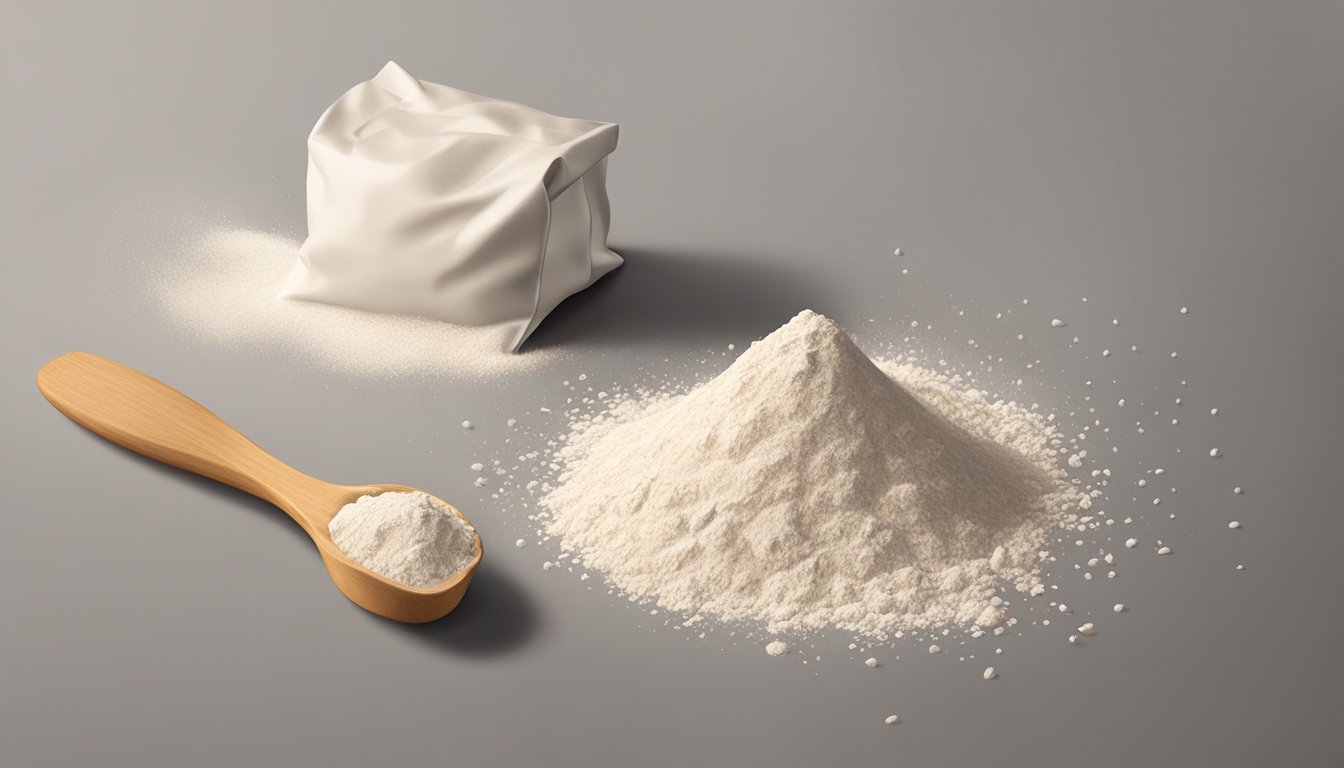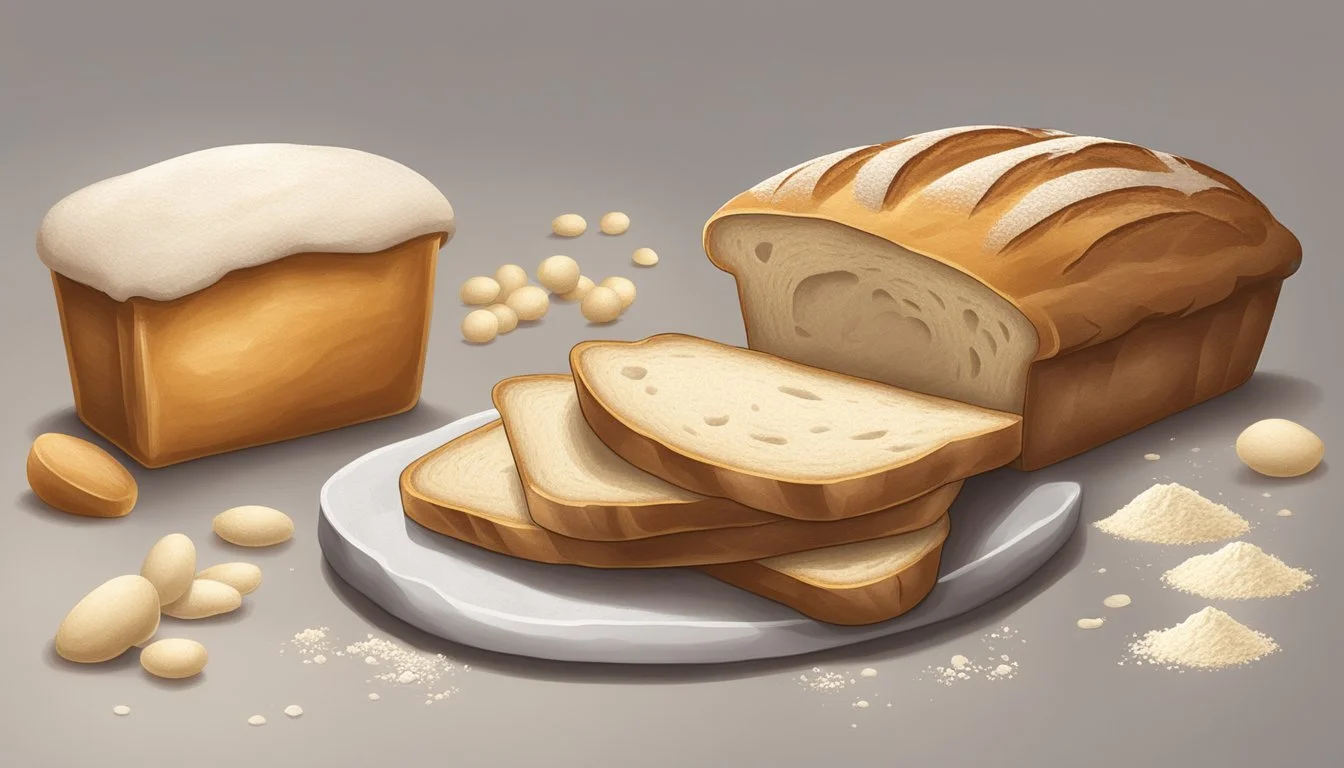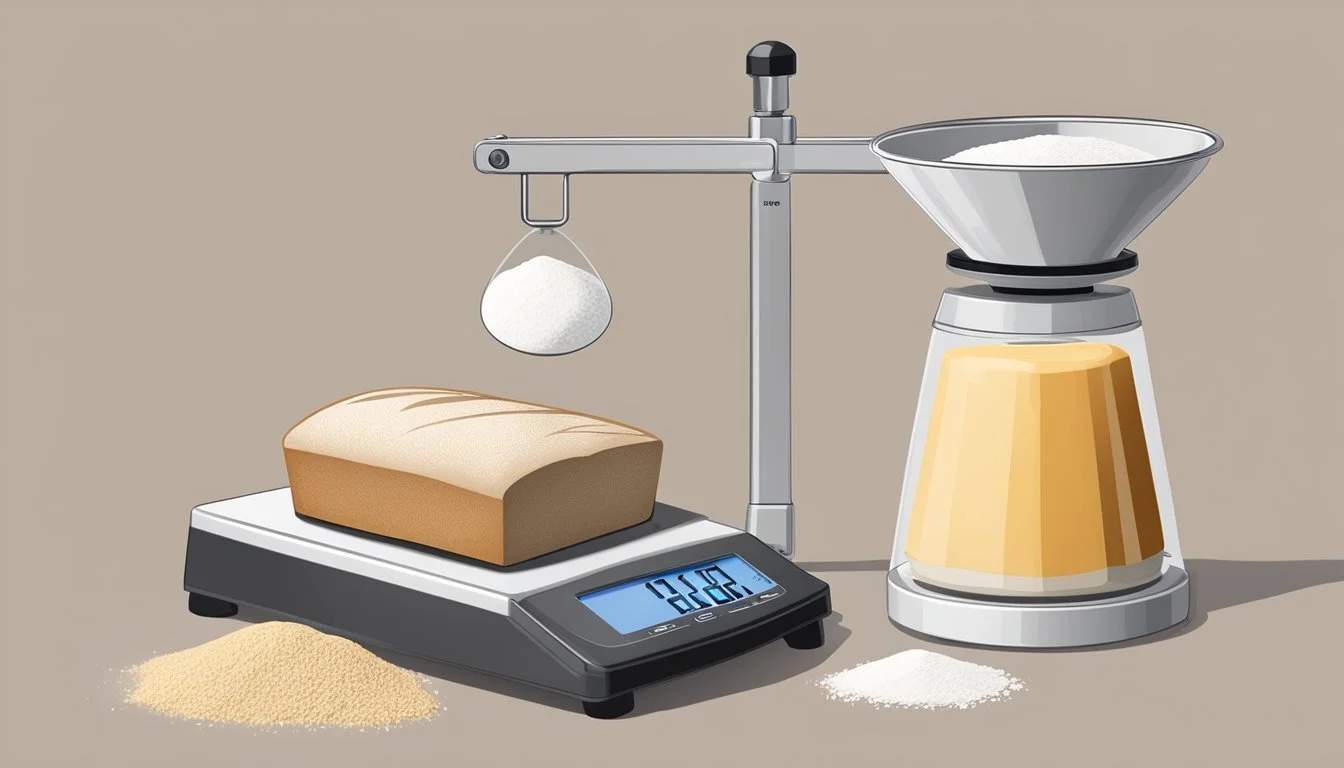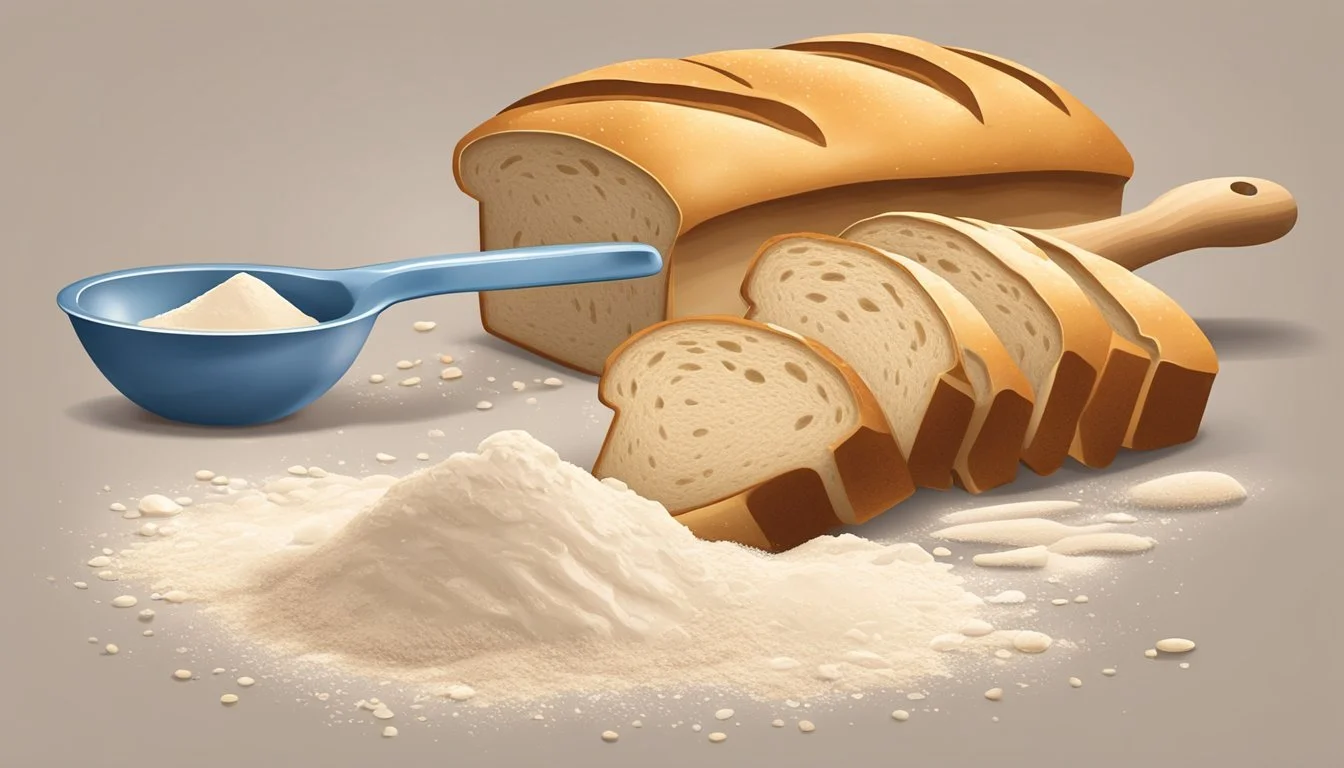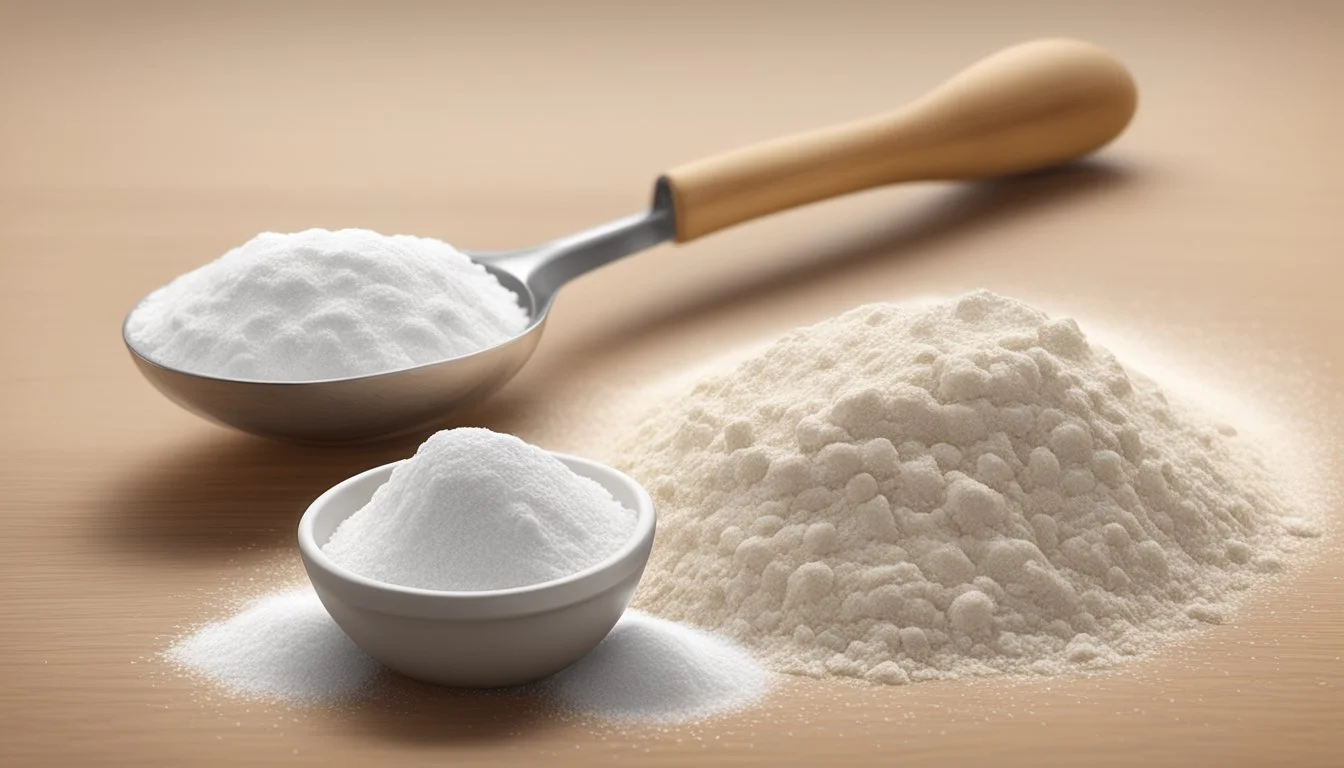How Many Tablespoons in a Pound of Bread Flour
Quick Measurement Guide
Converting units of measure is an essential task in the kitchen, particularly for baking where precision is paramount. When working with bread (What wine goes well with bread?) flour, a common question arises: How many tablespoons are there in a pound of bread flour?
Understanding the conversion is useful for both home bakers and professionals as recipes often call for volumes or weights interchangeably. The answer to the conversion question is that one pound of bread flour is approximately 53.3 US tablespoons. This approximation is based on the average weight of bread flour, but it is always recommended to use a kitchen scale for more accurate results, especially in baking.
It's important to note that the conversion rate between pounds and tablespoons can vary slightly depending on the ingredient density and the method of scooping flour. Bread flour is denser than all-purpose flour and requires a specific conversion rate. If a scale is not available, knowing the conversion rate can help bakers estimate the amount of flour needed for their recipes.
Understanding Measurements in Baking
In baking, precision is paramount as it impacts the texture, taste, and structure of the final product. The reader should understand that baking is a science, where each ingredient's measure can lead to success or failure of a recipe.
The Importance of Accurate Measurements
Baking differs significantly from other forms of cooking. The accuracy of measurements is a crucial aspect that a baker cannot overlook. Ingredients must be measured precisely as each ingredient's role is based on chemical reactions that depend on specific weights and volumes.
Weight refers to the mass of an ingredient, typically gauged in grams or ounces. A scale measures weight, providing a more accurate assessment of the amount of an ingredient than volume-based measurements. Volume, on the other hand, is the space an ingredient occupies, often measured in milliliters, cups, or tablespoons.
For dry ingredients like flour, which is common in baking, measuring by weight is significantly more reliable due to its susceptibility to compaction and air content. A pound of bread flour, for instance, is better weighed on a scale than measured by volume, as the latter can lead to variances caused by how the flour is settled or aerated.
In terms of accuracy, a baker understands that a slight variation in flour weight could alter the hydration of dough and affect the baked good's density and structure. Therefore, meticulous attention to measurements ensures repeatability and consistency in baking outcomes, earning a baker the confidence in their craft.
It’s worth noting that measurement terms are standardized in various regions. For example, a US cup measures 240 ml while a UK cup measures 250 ml. Such distinctions are important to recognize when following recipes from different culinary traditions.
Conversion Fundamentals
Understanding the conversion between tablespoons and pounds of bread flour involves grasping the fundamental differences between volume and weight measures. It's crucial because baking accuracy can greatly affect the outcome.
Volume vs. Weight
Volume is a measure of space occupied, typically denoted in cubic units or with specific utensils like cups, teaspoons, and tablespoons. Weight, on the other hand, is the measure of mass or the amount of matter in an object, using units such as ounces (oz) or pounds (lb). When converting volume to weight for bread flour, one must consider the density of the flour, which can vary slightly depending on type and brand.
Volume Unit Mass Measurement 1 tbsp ~0.375 oz 1 cup ~4.8 oz (16 tbsp)
Measurement Units
The standard units used in cooking are ounces and pounds for weight, and teaspoons, tablespoons, and cups for volume. The conversion of bread flour from pounds to tablespoons is based on the equivalence of 16 ounces per pound.
1 pound (lb) is equal to 16 ounces (oz)
1 ounce (oz) is approximately equal to two tablespoons (tbsp) of bread flour
For bread flour specifically:
1 pound (lb) is roughly equivalent to 53.3 tablespoons (tbsp)
The conversion factor is derived from the average density of bread flour, which leads to this approximation. To convert pounds to tablespoons:
tablespoons = pounds × conversion factor
Given the average density of bread flour, the conversion factor is approximately 53.3. This means:
1 lb of bread flour ≈ 53.3 tbsp
Bread Flour Specifics
In the realm of baking, understanding the nuances of bread flour is critical, especially when measuring its volume and weight for precise recipe execution. Bread flour's unique properties affect its conversion rates to tablespoons.
Density and Characteristics
Bread flour is known for its high protein content, usually around 12-14%, which contributes to its density. It is denser than all-purpose flour because the higher protein content affects the flour's gluten-forming potential. This is a crucial factor when converting weight to volume.
Conversion: 1 pound of bread flour is approximately 58 tablespoons, which reflects its density.
Bread Flour vs. Other Flours
Comparing bread flour to other types of wheat flour, they have distinct differences in protein content, which affects their baking applications:
All Purpose Flour: Typically has a protein content around 10-12% making it less dense than bread flour.
Cake Flour: Contains about 7-9% protein, making it much lighter and suitable for tender cakes.
Pastry Flour: Falls between all-purpose and cake flour in terms of protein, usually around 9-10%.
Whole Wheat Flour: Has a similar protein content to bread flour but includes more of the wheat grain, affecting its absorption and weight.
Each flour type has a specific volume-to-weight conversion due to these differences, so one cannot directly substitute one for another without adjusting the recipe. Bread flour, with its higher protein content, is ideal for hearty, chewy bread due to its ability to produce more gluten.
Tools and Techniques for Measurement
Proper measurement of ingredients is crucial in baking for consistent and desirable outcomes. Precision in measuring dry ingredients like bread flour, and accurate food conversion, is achieved through the use of scales and measuring tools. Below are techniques that enhance accuracy in the kitchen.
Using Scales for Precision
A digital scale is indispensable for bakers seeking accuracy in their ingredient measurements. When converting weight to volume, bread flour typically weighs about 120 grams per cup. Therefore, to find out how many tablespoons are in a pound of bread flour:
Turn the scale on and place your measuring vessel on it.
Press the "Tare" button to zero the scale.
Scoop the flour into the vessel until it reaches 453.6 grams, equivalent to one pound.
By using scale measurements, one can achieve a much more precise conversion and ensure consistency in recipes where precision is crucial.
Measuring Dry Ingredients
When measuring dry ingredients like bread flour without a scale, spooning the flour into the measuring cup and leveling it off is the most accurate method. Here's the approximate conversion:
1 pound of bread flour is roughly equivalent to 3 3/4 cups.
1 cup is equal to 16 tablespoons.
Thus, to convert pounds to tablespoons for bread flour, one would use the following calculation:
1 pound of bread flour ≈ 3 3/4 cups × 16 tablespoons/cup
1 pound of bread flour ≈ 60 tablespoons
It should be noted that this method is less accurate than using a scale, as the flour's density can vary based on factors such as brand, how it's packed, and environmental humidity. For the most reliability, bakers should rely on weight rather than volume for dry ingredient measurements.
Common Baking Ingredients Conversion
When baking, precision is key, and converting ingredient measurements is a critical skill. For bakers, understanding how common ingredients convert from volume to weight enables accurate and consistent results.
Butter, Sugars, and Syrups
Butter:
1 cup (2 sticks) = 226 grams
1 tablespoon = 14 grams
1 cup = 200 grams
1 tablespoon = 12.5 grams
Brown Sugar (packed):
1 cup = 220 grams
1 tablespoon = 13.75 grams
Honey:
1 cup = 340 grams
1 tablespoon = 21.25 grams
Maple Syrup:
1 cup = 322 grams
1 tablespoon = 20.13 grams
Molasses:
1 cup = 260 grams
1 tablespoon = 16.25 grams
Oats, Nuts, and Alternative Flours
Oats:
1 cup = 80 grams
1 tablespoon ≈ 5 grams
Rye Flour:
1 cup = 102 grams
1 tablespoon ≈ 6.38 grams
Coconut (shredded):
1 cup = 71 grams
1 tablespoon ≈ 4.44 grams
Cornmeal:
1 cup = 157 grams
1 tablespoon ≈ 9.81 grams
1 cup = 128 grams
1 tablespoon = 8 grams
Soy Flour:
1 cup = 92 grams
1 tablespoon ≈ 5.75 grams
These conversions serve as a general guide. It's important to note that the weight can vary slightly depending on factors like moisture content, packing method, and the grind of the ingredient.
Practical Conversion Example
In order to understand how to convert pounds of bread flour into tablespoons, one must utilize the correct conversion ratio. This section will provide a specific example that demonstrates the process of converting weight to volume for bread flour.
Calculating Tablespoons in a Pound of Bread Flour
To convert a pound of bread flour to tablespoons, the following conversion rate is applied: one pound of bread flour is equivalent to approximately 53.3 US tablespoons. This is based on the fact that a pound of bread flour typically has a volume of roughly 53.3 tablespoons. Here is a step-by-step example:
Identify the amount of bread flour in pounds: If a recipe requires 1 pound of bread flour.
Apply the conversion ratio: Use the conversion of 1 pound of bread flour to 53.3 tablespoons.
Multiply the two: Multiply the number of pounds by the conversion ratio (53.3):
[ \textbf{Pounds of bread flour} \times \textbf{53.3 tablespoons/pound} = \textbf{Tablespoons of bread flour} ]
Calculate: For 1 pound of bread flour, the calculation would be:
[ 1 \times 53.3 = \textbf{53.3 tablespoons} ]
Therefore, when a recipe specifies the need for 1 pound of bread flour, one would measure out 53.3 US tablespoons to achieve the correct volume. This exact process can be scaled accordingly for different amounts of flour, ensuring precise conversions for any recipe.
Recipes and Applications
Bread flour is favored by bakers for its high protein content, which contributes to the structure and chewiness of baked goods. Precision in measurement is key for chefs and bakers when preparing recipes, especially when converting weight to volume.
Incorporating Bread Flour in Recipes
When incorporating bread flour into recipes, understanding the conversion of pounds to tablespoons can greatly impact the outcome. A pound of bread flour typically equates to approximately 58 tablespoons. This knowledge assists chefs and bakers in maintaining the integrity of their recipes when kitchen scales are not available.
Here is an example of how bread flour is measured for common bakery recipes:
Pizza Dough: Requires about 3 1/2 to 4 cups of bread flour, which is roughly 67 to 77 tablespoons.
Artisan Breads: Often call for more precise measurements, some needing around 2 pounds of bread flour, translating to approximately 116 tablespoons.
Bakers frequently rely on bread flour for its gluten-forming capabilities, which are essential for breads that need a good rise and chewy texture. It is crucial that they use the correct amount of bread flour as disproportionate measurements could result in breads that are too dense or too airy. Using tablespoons as a measure can be suitable for small-batch recipes or for domestic cooking when precision is less critical than in professional baking environments.
Additional Resources
For enthusiasts seeking to deepen their understanding of baking measurements and enhance their culinary skills, it is advantageous to explore a variety of recommended readings and subscribe to newsletters curated by industry experts. These resources often provide valuable insights into the science of baking, offer precise measurement conversions, and deliver the latest developments in the culinary world.
Recommended Readings
"Precision Baking: The Science of Flour Measurements" – This book offers an in-depth examination of ingredient measurements and how slight variations can affect the outcome of baked goods.
"From Kitchen to Table: The Art of Baking with Weights and Measures" – Readers will find this guide an excellent resource for understanding the benefits of using weight measurements, including tablespoons and pounds, in baking.
Newsletters
The Daily Bread – A comprehensive newsletter that includes tips on measuring ingredients, as well as insights into different types of flour and their properties.
Culinary Measures Weekly – Subscribers receive weekly updates on new measurement techniques, seasonal produce, and spotlight features on professional bakers.
BakePro Essentials – This newsletter focuses on delivering professional culinary tips, creative baking ideas, and the latest trends in the world of baking.
Disclaimer
When discussing the conversion from pounds of bread flour to tablespoons, it is essential to regard the following disclaimer. The reader should note that any conversion figures stated are approximate and are provided for convenience and for guidance purposes only.
Accuracy of Conversion:
The conversion ratios from pounds to tablespoons can vary depending on the specific type of flour and its density.
While a general conversion guideline is approximately 53 to 58 tablespoons per pound, these figures should not replace professional culinary measurements, especially when precision is crucial.
Potential for Errors or Omissions:
The data presented is carefully reviewed, yet the possibility of errors or omissions cannot be entirely excluded. Readers using this information for critical baking or dietary requirements should confirm the accuracy of the conversion through additional resources or scales designed for precise measurements.
Volume vs. Weight:
Conversion from weight (pounds) to volume (tablespoons) is subject to the compaction level of the flour which can alter the volume.
Flour should be aerated, sifted, or gently spooned into a measuring spoon for a more accurate measurement.
Table of Standard Approximations for Quick Reference:
Amount in Pounds Approximate Tablespoons (Unsifted) 1/4 lb 13 - 14.5 tbsp 1/2 lb 26.5 - 29 tbsp 3/4 lb 39.75 - 43.5 tbsp 1 lb 53 - 58 tbsp
The publisher of this conversion guideline disclaims any responsibility for the outcome of using this data for real-world applications. For best results, users should rely on a digital scale.

